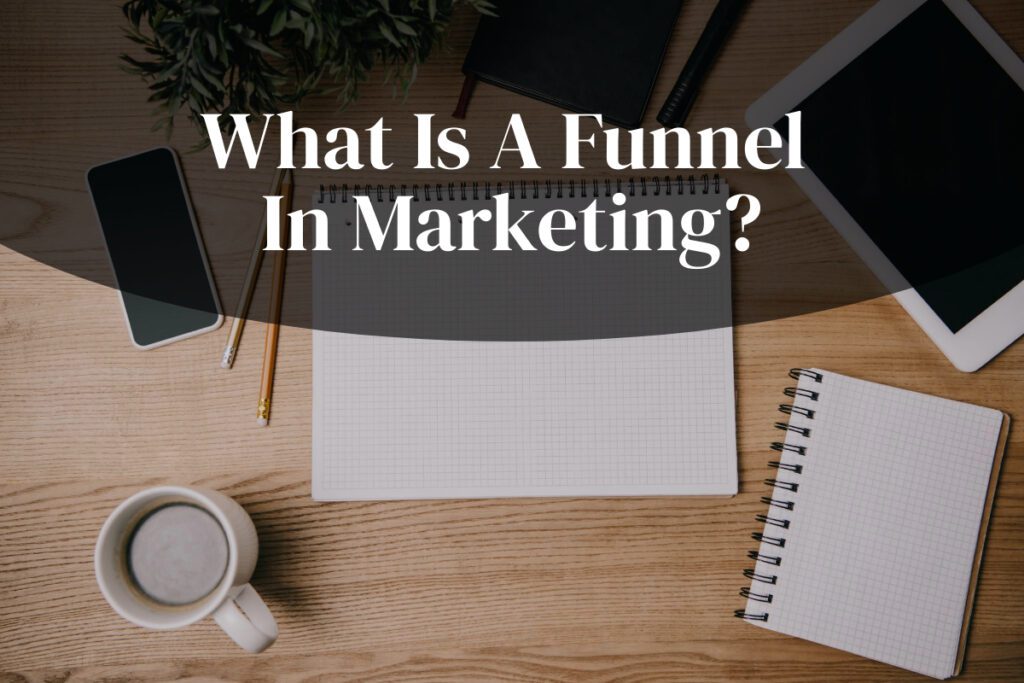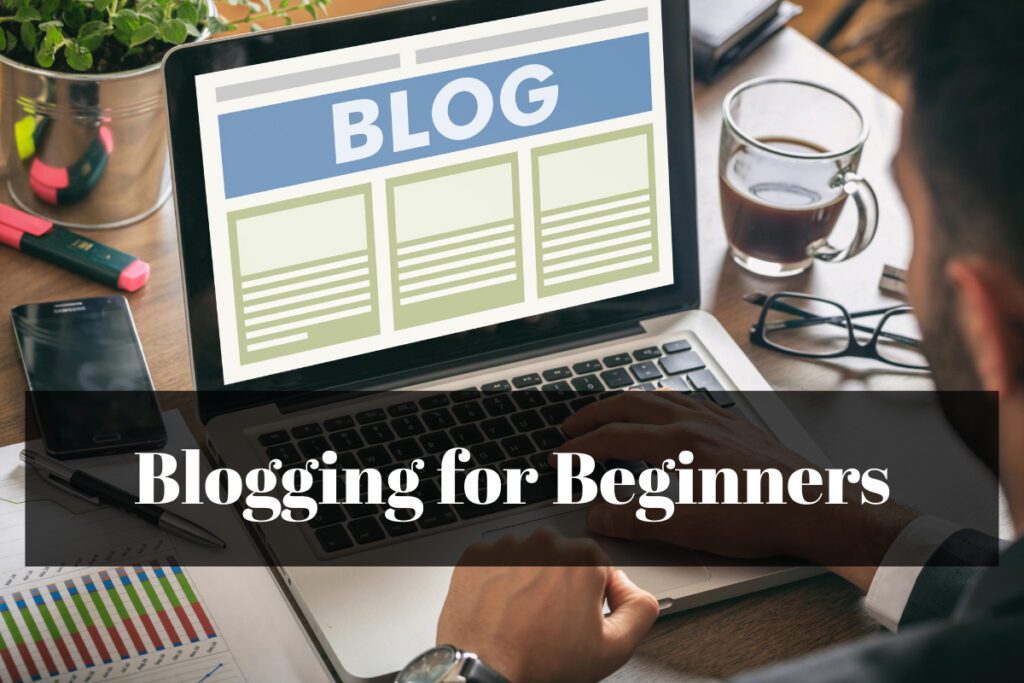A funnel in marketing is a process that helps you convert visitors into customers. It is the foundation of any successful marketing campaign. A marketing funnel represents a customer’s steps to become an actual user or buyer.
Every business needs to know what their marketing funnel looks like, as it is the best indicator of how much time and effort they should put into each stage.
There are many different kinds of marketing funnels available on the market today.
Table of Contents
Toggle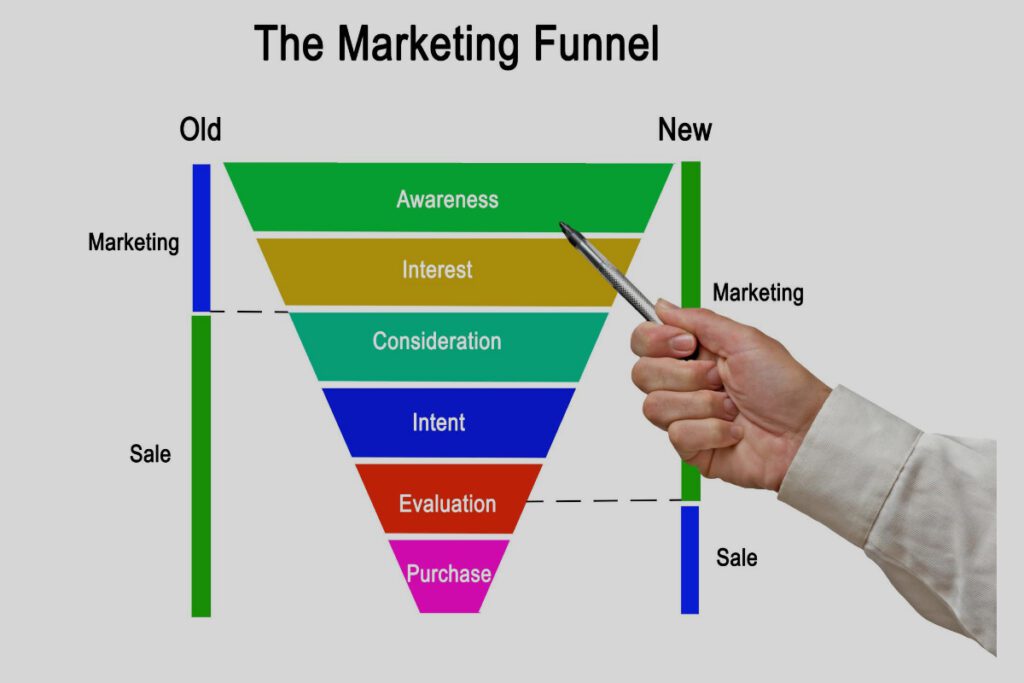
What is a Funnel in Marketing?
A funnel is a marketing term that describes a customer’s journey from first hearing about your product or service to becoming a paying customer. The funnel is usually divided into several stages: awareness, consideration, and purchase.
A marketing funnel is a model that shows the way a potential customer goes from becoming aware of your brand to purchasing the product or services from you. It helps you clearly map your marketing efforts for your potential customers.
Generally, companies use marketing funnels to understand their customers’ needs in each stage, optimize their marketing efforts, and generate more sales.
A funnel is a clear framework for marketing activities.
There are four stages to a marketing funnel: Awareness building, Consideration building, Conversion and Retention.

Defining the Marketing Funnel
The basics of the marketing funnel have stayed the same since the 1900s, and there is no one universally accepted model for a marketing funnel.
Every marketing funnel aims to achieve a goal and structure the funnel in stages to generate expected traffic.
To understand what needs to be done in each stage of the funnel in order for it to generate expected traffic, you need to know what your target audience knows about your product or service.
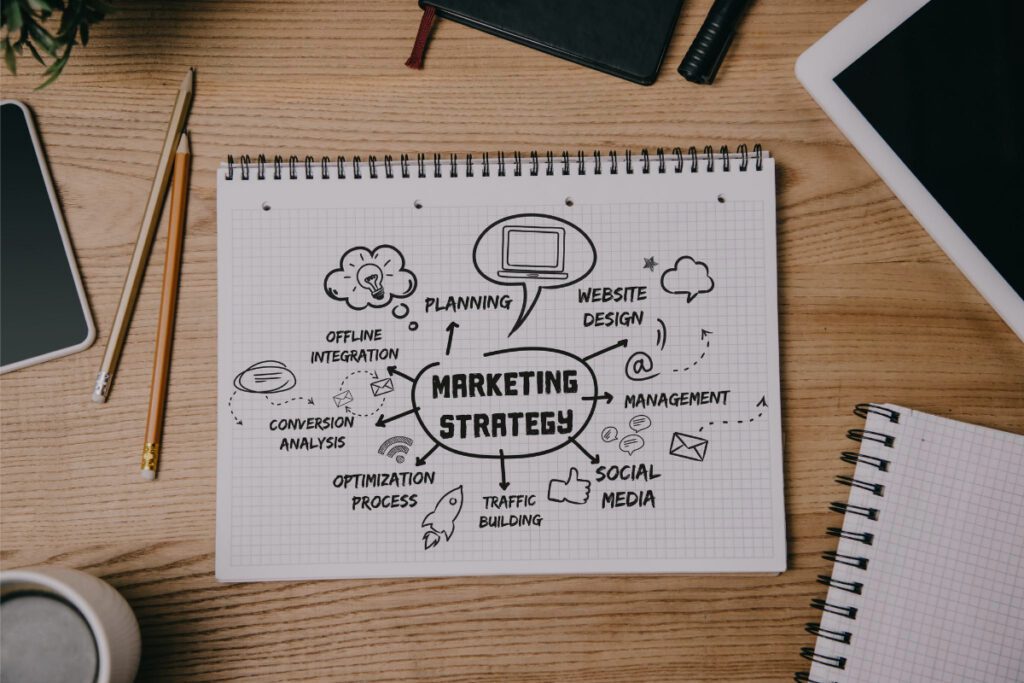
Understand Marketing Funnel
A marketing funnel is a diagram that illustrates the customer’s journey from awareness to purchase. It shows the different stages a customer goes through and the corresponding actions you need to take to move them through the funnel.
The goal of using a funnel is to move more customers through it so that they reach your desired outcome, such as making a purchase or becoming a lead.
There is no one-size-fits-all model for the marketing funnel, as each company’s needs will be different.
However, there are some basic steps that are common to all funnels:
- Define your goal – what do you want your customers to do?
- Create a visual image of the funnel – what needs to happen at each stage, and how many steps are in each stage?
- Define the steps that make up your sales cycle – who will do this, and when should they do it?
- Choose your target audience and create material aligned with their level of knowledge.
- Test and tweak your funnel until you reach your desired outcome.
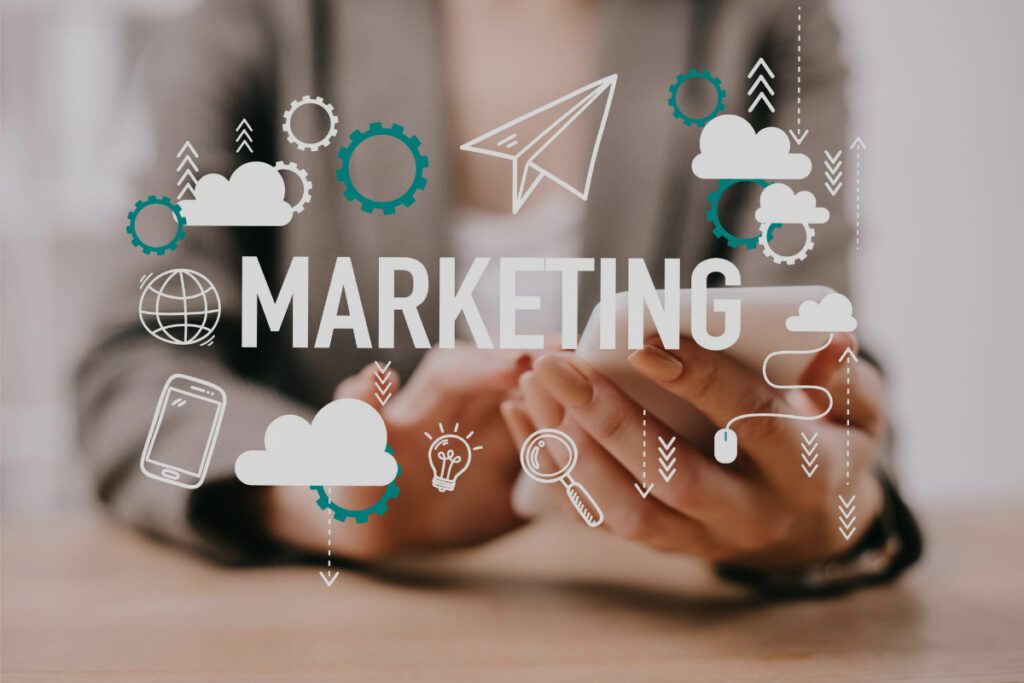
How does a Funnel in Marketing Work?
A funnel in marketing is a process that takes a large number of potential customers and narrows it down to a smaller number of qualified customers.
The funnel process typically starts with a large number of potential customers, who are then targeted with marketing messages that are designed to appeal to them.
The messages are then filtered down to a smaller number of customers who are more likely to buy the product.
Tips: An Effective Funnel Strategy to Consider
A funnel is a marketing tactic that leads customers to become your “marketing team” by using their friends as guides. Your goal is to grow your funnel from the first stage (awareness) all the way up to consideration.
A friend’s recommendation will take them straight through awareness and consideration, giving you an advantage over competitors who don’t have this advantage.
The customer’s goal is to help friends overcome similar struggles. Surveys, referral incentives, and loyalty discounts are the best content to offer. In some cases, you can refer to this as advocacy.
The “advocacy” stage is one of the most effective stages of marketing, where customers become your advocates.
This stage aims to grow your funnel by turning customers into marketers.
Key performance metrics to track in this stage are referrals, reviews, and Net Promoter Score (NPS).
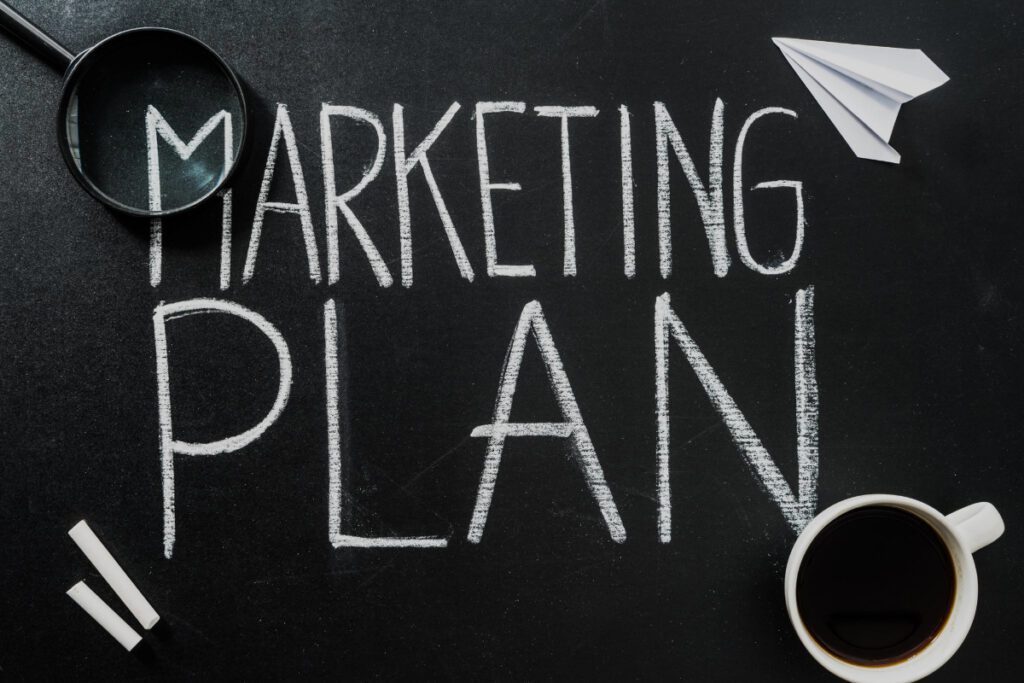
The Benefits of Marketing Funnels
Marketing funnels are a strategic way to guide potential customers through the marketing and sales process, eventually turning them into paying customers.
The main benefits of marketing funnels are:
- Increased conversion rates: Marketing funnels help to convert more leads into paying customers by guiding them through the process step-by-step.
- Improved customer retention: Marketing funnels help to keep customers engaged with your brand by providing them with valuable content and offers.
- More efficient marketing: Marketing funnels simplify the customer journey, and they make it easier for companies to understand the customer’s journey.
- A marketing funnel allows for adequate measurability of progress.
- Marketing funnels show you where you’re losing customers to help you pivot your strategy.
- Marketing funnels are an essential part of any marketing plan. They simplify the customer journey and make it easier for you to track progress.
- Marketing funnels can be used for any type of customer interaction, whether you are looking to increase website traffic, generate leads or promote affiliate products.
The biggest benefit of marketing funnels is that they help with measurability due to their visibility at each stage in the process.
This means you can see where your customers are dropping off and make changes to keep them moving through the funnel.
A funnel in marketing is a model which shows the path a customer takes from awareness of your brand to purchase.
The first stage of the funnel in marketing is brand awareness, followed by consideration, evaluation and conversion into an action that leads to a sale or purchase.
Marketing funnels are an essential tool for businesses to understand their customers’ needs in each stage, optimize marketing efforts, and generate more sales.
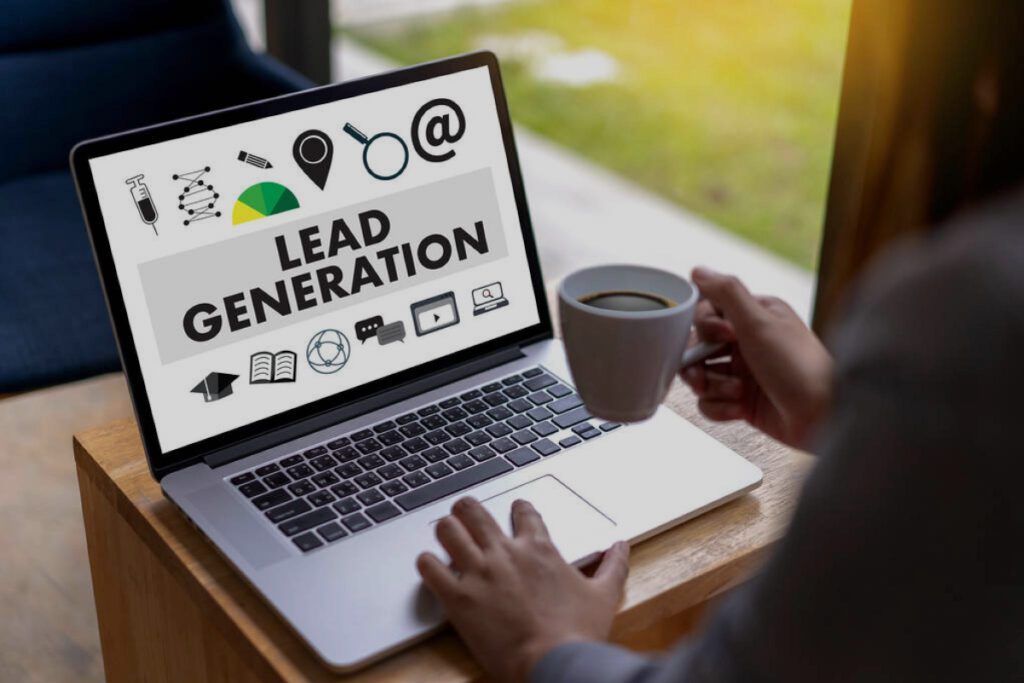
Strategies for Each Stage of the Marketing Funnel
There are many different strategies that can be used in each stage of the marketing funnel.
- Awareness: Branded content strategies appeal to audiences and make them receptive to future interactions.
- Consideration: Brand advocates and social proof assist customers when they’re comparing you against competitors.
- Conversion: A simple purchasing process reduces the risk of buying.
- Loyalty: A loyalty program with regular discounts, email interactions, and social media maintains customers.
- Advocacy: Receptive individuals in your loyalty program support your future marketing funnels.
Increasing awareness can be done through things like branded content, social media ads, and influencer marketing.
Converting prospects into customers is often done through discounts, loyalty programs, and upsells.
Maintaining customer relationships can be done with loyalty programs, advocates, and product/service upgrades.
Generally, every step of the marketing funnel needs to work seamlessly for a successful campaign.
This means having a strategy in place for each stage of the funnel and making sure all the pieces are working together towards a common goal.
Your funnel starts with increasing awareness, followed by converting prospects into customers, and then maintaining their interest through continued engagement.
Strategies like branded content, brand advocates, and social proof help customers easily make decisions.
By using these different strategies in each stage of the funnel, you’ll be able to increase your chances of success while making it easier for your customers to make decisions about your product or service.
The Difference between B2B Marketing Funnels and B2C Marketing Funnels
Marketing funnels are essential for understanding customer needs and optimizing marketing efforts.
B2B and B2C customers have different funnel stages, which affects the marketing strategy used. Nevertheless, there are different types of marketing funnels, depending on the kind of company.
B2B customers often interact directly with a company representative, while B2C customers typically don’t.
Another key difference is that B2C customers are often looking for immediate gratification–they want to buy a product or service and use it right away.
On the other hand, B2B customers may be interested in learning more about a company and what it has to offer before they make a purchase. So your funnel needs to reflect this difference as well.
Also, marketing funnels often change depending on your customer base. While planning your funnel, it’s essential to be aware of these differences and create compelling marketing funnels that fit in with the changes
and your specific target market.

Marketing Funnel Stages and Conversions
Awareness is the uppermost stage of the marketing funnel, and potential customers are drawn in through marketing campaigns and consumer research.
Interest is when leads are generated, and marketers can nurture them with targeted content, classes, newsletters, etc.
Consideration is when leads have been changed into marketing qualified leads, and marketers can send prospects more information about products and offers through automated email campaigns.
Intent happens when prospects demonstrate that they are interested in buying a brand’s product- this can occur in a survey, after a product demo, or when a product is placed in the shopping cart in the case of an eCommerce website.
The evaluation stage is when buyers decide whether or not to buy a brand’s product or services.
The purchase stage is when a prospect has decided to buy and turns into a customer.
The positive experience on the part of the buyer can lead to referrals that fuel the top of the marketing funnel, and the process begins again.
It’s important for marketers to be creative and use a variety of tactics to drive awareness and interest in their products and services.
Once leads are generated, it’s important to nurture them through the funnel until they reach the purchase stage.
This can be done with email campaigns, targeted content and more. By providing valuable content and developing relationships with potential customers, marketers can increase their chances of making a sale.
How to Build a Marketing Funnel for Your Content
- Define your goal.
- Identify your audience.
- Create content that appeals to your audience.
- Optimize your content for search.
- Promote your content.
- Measure your results.
A funnel in marketing aims to help you reach your target market more effectively than simply advertising or selling directly to them.
Conclusion
A funnel is the foundation of any successful marketing campaign. By having an in-depth understanding of a marketing funnel, you will be able to create a process that will help you convert visitors into paying customers. However, creating a marketing funnel can be difficult, but it is well worth the effort if done correctly.
Related posts:
- Online Affiliate Marketing Basics.
- 3 Tips to Become a Successful Affiliate Marketer
- 8 Tips on Choosing a Profitable Affiliate Marketing Program
- How To Delete My Wealthy Affiliate Account: Here is a Quick Guide
- Discover 8 Things To Do To Make Money At Home
- How Much Money can you Make with Affiliate Marketing, and How does it Work?

